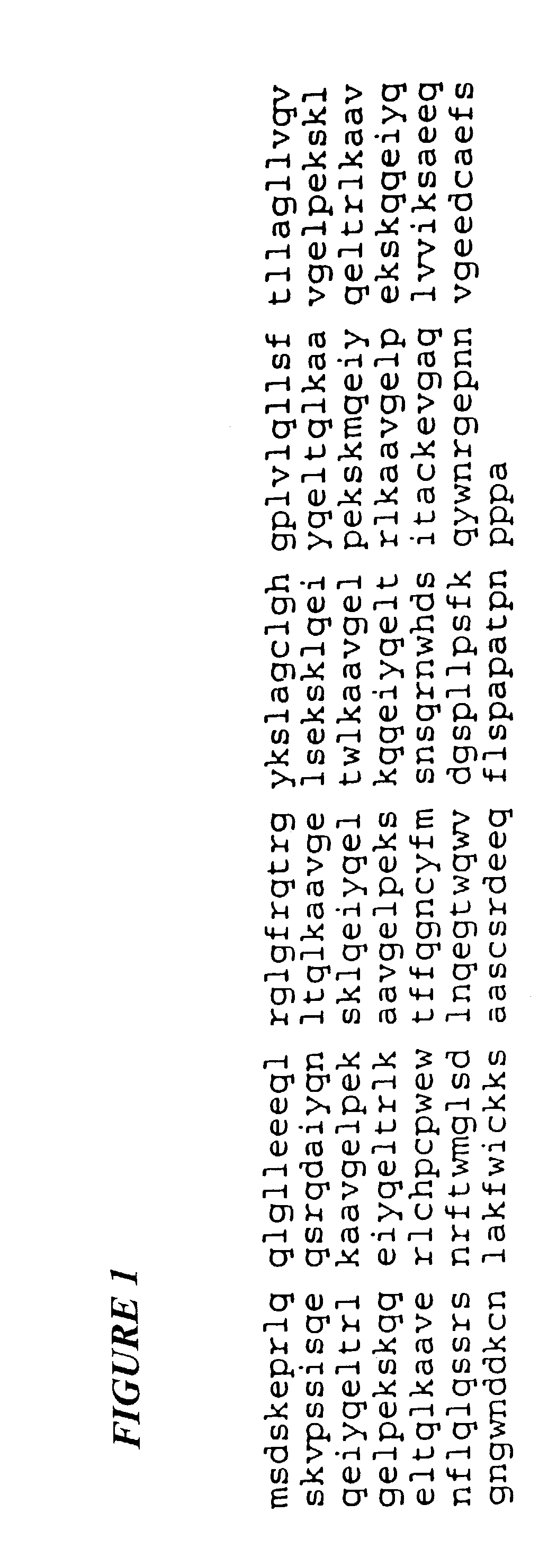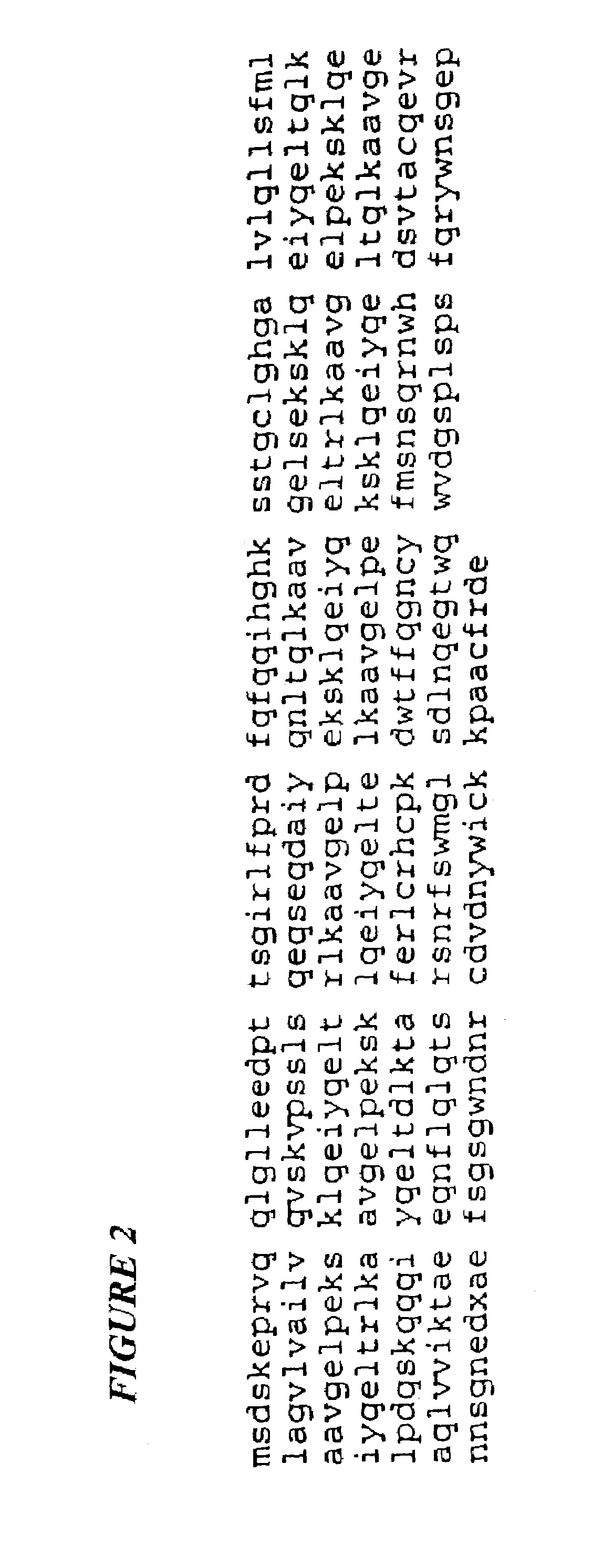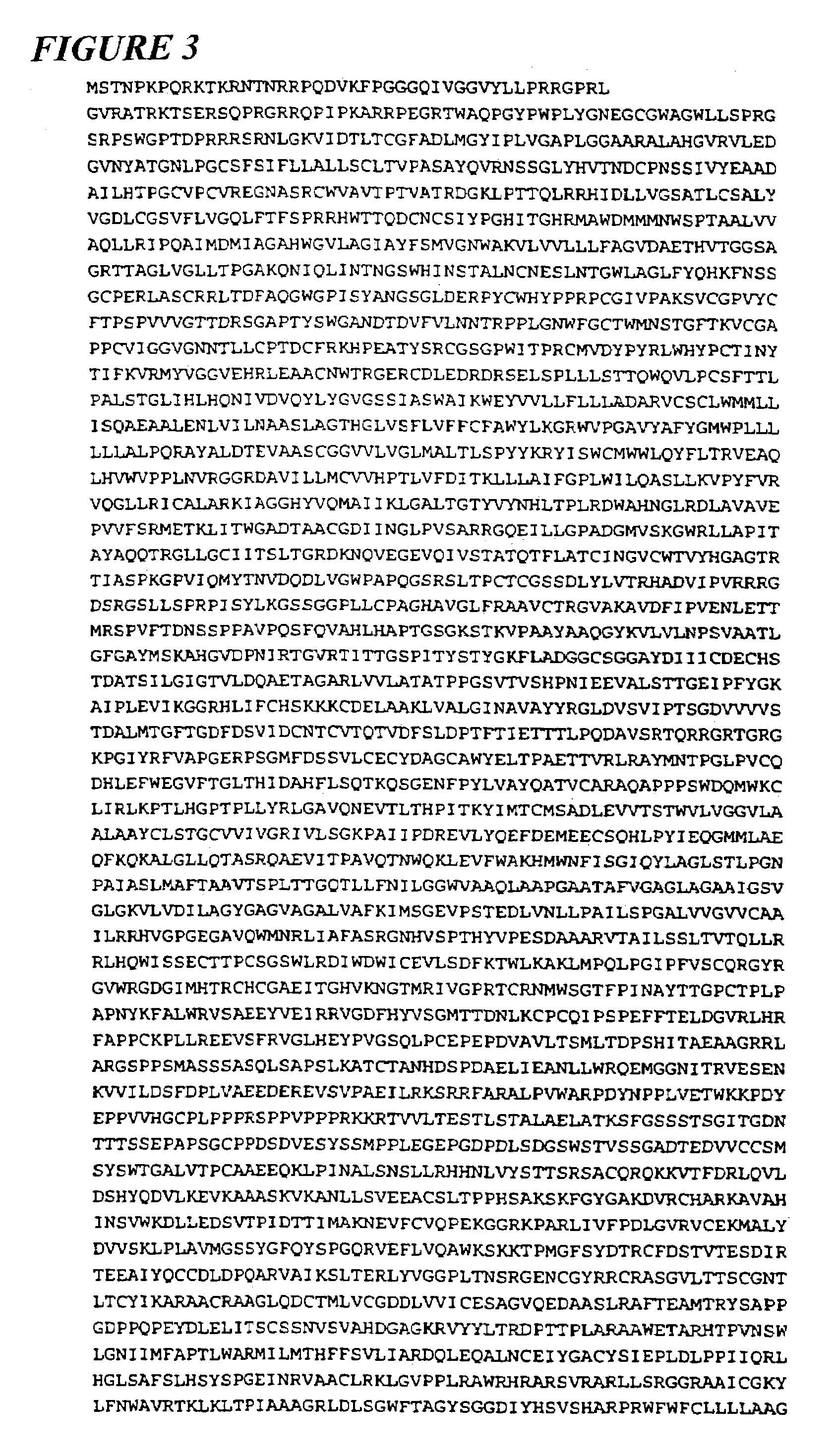Uses of DC-SIGN and DC-SIGNR for inhibiting hepatitis C virus infection
- Summary
- Abstract
- Description
- Claims
- Application Information
AI Technical Summary
Benefits of technology
Problems solved by technology
Method used
Image
Examples
Embodiment Construction
lass="d_n">[0150]This invention provides a method of inhibiting HCV infection of a cell susceptible to HCV infection which comprises contacting the cell with an amount of a compound effective to inhibit binding of an HCV envelope glycoprotein to a DC-SIGN protein present on the surface of the cell, so as to thereby inhibit HCV infection of the cell susceptible to HCV infection. This invention provides a method of inhibiting HCV infection of a cell susceptible to HCV infection which comprises contacting the cell with an amount of a compound effective to inhibit binding of an HCV envelope glycoprotein to a DC-SIGNR protein present on the surface of the cell, so as to thereby inhibit HCV infection of the cell susceptible to HCV infection.
[0151]Cells which are susceptible to HCV infection may bind virus through DC-SIGN and / or DC-SIGNR molecules. In addition, cells which are not susceptible to HCV infection may bind virus through DC-SIGN and / or DC-SIGNR molecules. Bound virus is then tra...
PUM
| Property | Measurement | Unit |
|---|---|---|
| Time | aaaaa | aaaaa |
| Mass | aaaaa | aaaaa |
| Dimensionless property | aaaaa | aaaaa |
Abstract
Description
Claims
Application Information
 Login to View More
Login to View More - R&D
- Intellectual Property
- Life Sciences
- Materials
- Tech Scout
- Unparalleled Data Quality
- Higher Quality Content
- 60% Fewer Hallucinations
Browse by: Latest US Patents, China's latest patents, Technical Efficacy Thesaurus, Application Domain, Technology Topic, Popular Technical Reports.
© 2025 PatSnap. All rights reserved.Legal|Privacy policy|Modern Slavery Act Transparency Statement|Sitemap|About US| Contact US: help@patsnap.com



